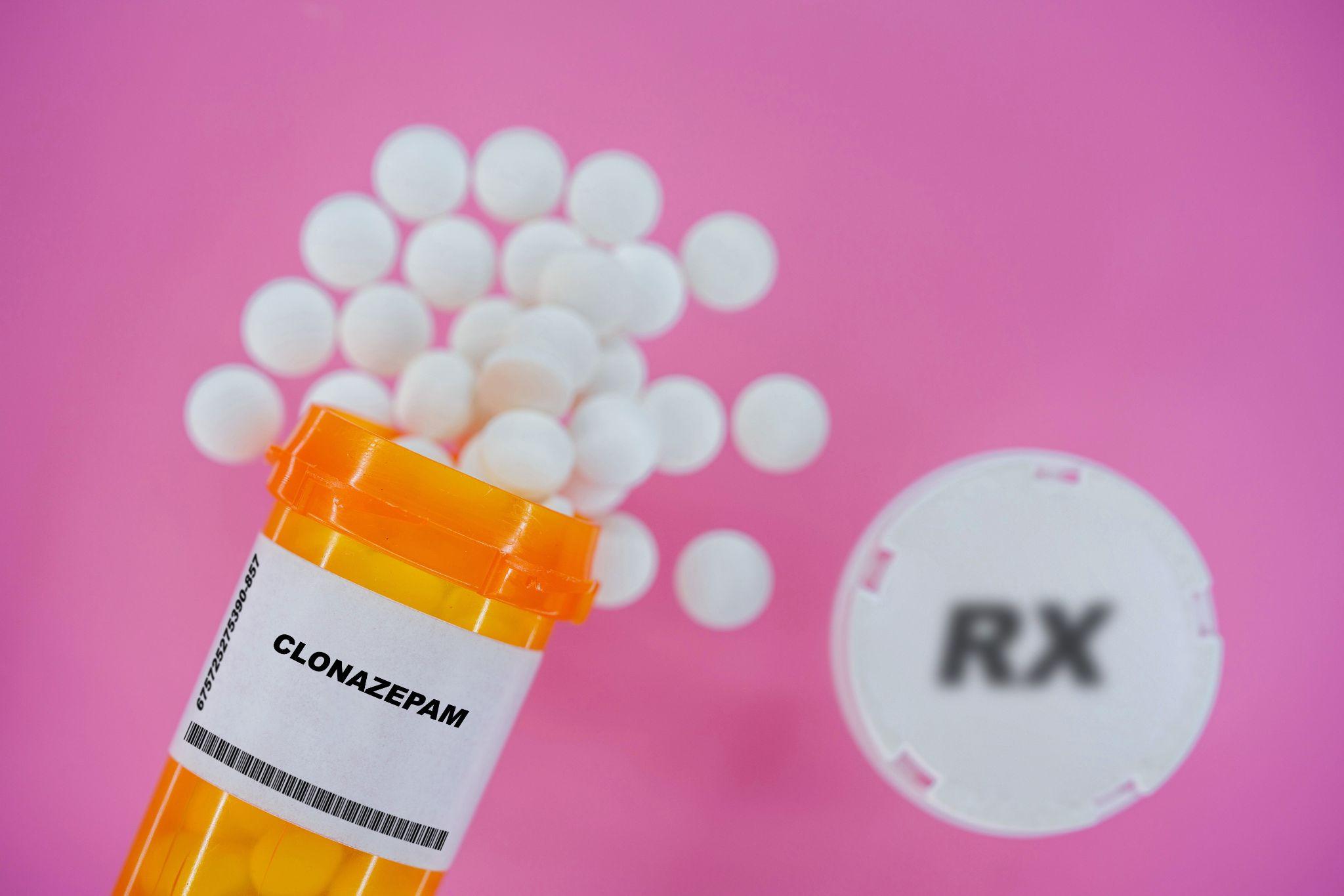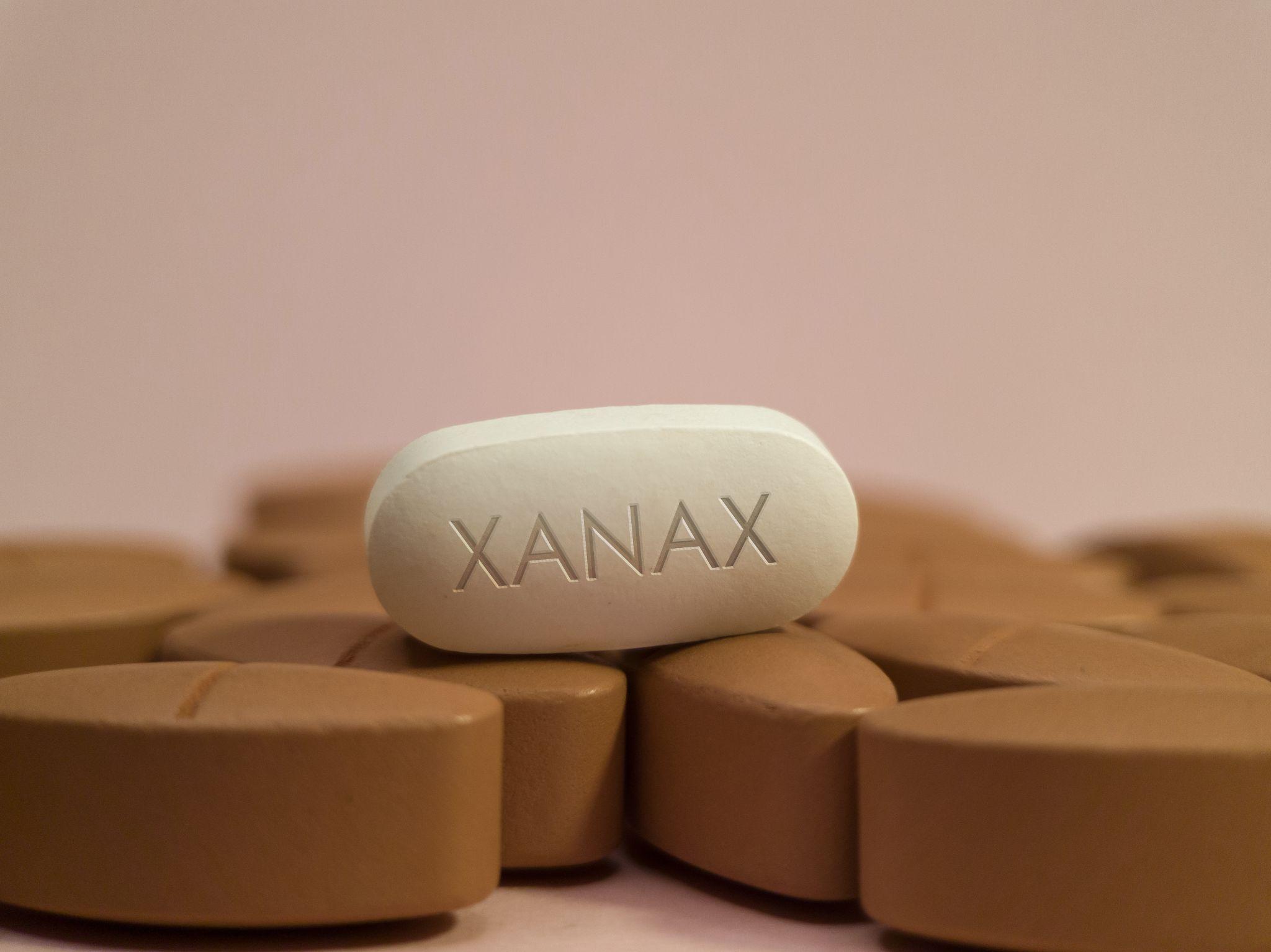
Our Addiction Resources
Navigating the world of addiction and recovery can be overwhelming. We’re here to provide clear, compassionate education and guidance. From practical advice for maintaining sobriety to informational guidance on the long-term effects of substance abuse, our content is a beacon of hope and understanding.
Our Team is Ready are ready to take your call
Call us Today!
or we can call you. Fill out form below
Our Blog

Drug Use in the NFL
The National Football League (NFL) represents the pinnacle of professional American football, a sport revered and celebrated by millions. However, beneath the glitz and glamor of touchdowns and trophies lies a less-discussed aspect of this high-stakes world: drug use.
While the NFL has stringent policies regarding substance abuse, the pressures faced by professional athletes can sometimes lead to the use of performance-enhancing drugs (PEDs) or substances for pain management and recreational purposes.
At Lumina Recovery, we hope to inform athletes and their loved ones about the nature of drug use in the NFL, its implications, and the ongoing efforts to address this complex issue.
Types of Drugs Commonly Used
A large number of NFL players have been known for using various types of performance-enhancing drugs (PEDs), each serving different purposes. Among the most notable are anabolic steroids and human growth hormones (HGH).
Anabolic steroids are synthetic substances similar to the male hormone testosterone. They are used primarily to increase muscle mass and strength, which can be particularly advantageous in a physically demanding sport like football.
These steroids can also aid in faster recovery from injuries, allowing players to return to the field sooner. However, their use carries significant health risks and is banned in professional sports, including the NFL.
Human growth hormones (HGH), another type of PED, are also prevalent in the sports world. HGH naturally occurs in the body and plays a key role in growth and cell regeneration. When used artificially, it can enhance muscle growth and promote quicker recovery from injuries, much like anabolic steroids.
Athletes may find HGH appealing for its potential to improve physical performance and reduce recovery time after strenuous activities. Nonetheless, the use of HGH without a medical prescription is illegal in the United States and is strictly prohibited by the NFL and other major sports organizations.
Another common type of drug use pertains to painkillers. Given the physically demanding nature of football, opioids and other pain management drugs are often used by players to deal with injuries and the constant wear and tear of their bodies.
Additionally, there is the use of recreational drugs, like marijuana. Despite the changing legal landscape regarding marijuana use, its place in the NFL remains a contentious topic, with debates over its use for pain management and as a safer alternative to opioids.
Reasons Behind Drug Use
In this high-stakes arena, drug use in the NFL is more complex than it might appear at first glance. While the league has strict policies against substance abuse, various factors contribute to why players might turn to drugs. Here is a list of key factors that shed light on why drug use occurs in the NFL:
- Performance Enhancement: Athletes often turn to performance-enhancing drugs (PEDs) like anabolic steroids and human growth hormones to improve strength, speed, and endurance.
- Injury Recovery and Pain Management: To cope with injuries and the physical demands of the sport, players may use painkillers, including opioids, and other prescription drugs that can aid in quicker recovery.
- Pressure to Compete and Succeed: The high-pressure environment of professional football, where performance directly impacts career longevity and success, can drive players to use drugs that they believe will enhance their performance. To get through training camps and the Super Bowl, players face a lot of pressure.
- Stress and Mental Health Challenges: Players might use drugs or alcohol as a way to cope with stress, anxiety, depression, or other mental health issues.
- Peer Influence and Cultural Factors: The influence of teammates or a culture within certain teams that tolerates or encourages drug use can contribute to players deciding to use drugs.
- Managing Chronic Pain: The physically demanding nature of football often leads to chronic pain issues, especially for offensive linemen, leading some players to use pain management drugs regularly.
- Lack of Awareness or Misinformation: Players might not be fully aware of the dangers of certain drugs or might be misinformed about their effects and legality.
- Attempting to Prolong Career: Older players or those recovering from injury might use drugs to help maintain their performance levels and prolong their careers.
- Recreational Use and Experimentation: Like many individuals, some players may use drugs recreationally or out of curiosity or experimentation.
- Escaping Pressure or Reality: Use of drugs as a form of escapism from the intense pressures of professional sports or personal issues.
- Substance Dependency and Addiction: What might start as a one-time use can develop into dependency and addiction due to the addictive nature of certain substances.
The NFL’s Drug Policy

The NFL has implemented a comprehensive drug policy to tackle the issue of substance abuse within the league. This policy includes regular and stringent drug testing as well as random tests to deter and detect the use of banned substances. Players whose test results come back positive for prohibited drugs face serious consequences, including game suspensions and fines.
This strict approach reflects the league’s commitment to maintaining fair play and the health of its players. Moreover, the NFL’s policy has evolved over time. For instance, recent years have witnessed a shift in the league’s stance on marijuana, mirroring broader societal changes and the ongoing debate about its medicinal benefits. This evolution indicates the NFL’s willingness to adapt its policies in line with new research and changing perspectives on drug use.
Impact on Players and the League
The implications of drug use in the NFL extend far beyond individual football players. They have significant ramifications for the league as a whole. For players, the health risks associated with drug use, particularly PEDs and painkillers, are a major concern. Long-term use of these substances can lead to a myriad of health issues, including hormonal imbalances, liver damage, and addiction.
Besides health risks, players caught using banned substances face career-threatening consequences. Penalties often include suspensions, fines, and in some cases, tarnishing of their professional reputation.
Drug scandals not only challenge the integrity of the sport but also affect the league’s public image. When high-profile players are implicated in drug use, it raises questions about the league’s commitment to fair play and player health, potentially eroding fan trust and support.
For example, Sam Hurd, a retired player from the Chicago Bears, was imprisoned in 2011 for cocaine trafficking, damaging his and his teammates’ reputations.
Learn More About Athletes and Addiction at Lumina Recovery
Drug use in the NFL is a multifaceted issue, interwoven with the physical and psychological demands of professional sports. While policies and penalties form one aspect of addressing this challenge, understanding the underlying causes and providing supportive pathways for players is equally important.
Lumina Recovery offers specialized programs for athletes and dual diagnosis care to help those struggling with addiction.
Reach out to our team today to learn more about our services.

Klonopin Addiction: A Look at Dependency Risks
Klonopin has emerged as a beacon of relief for many in the stressful and anxiety-provoking society we live in. Known as the brand name for clonazepam, this medication belongs to the benzodiazepine family, which are Schedule IV drugs, noted for their ability to quell anxiety, ease epileptic seizures, and provide sedation.
Klonopin is a central nervous system depressant that works by enhancing the activity of neurotransmitters in the brain, promoting relaxation, and reducing anxiety. Its potency makes it highly effective but also raises the specter of dependency, especially with long-term use or misuse.1
Klonopin addiction is common, and Lumina Recovery aims to educate about Klonopin abuse and its adverse effects.
The Cycle of Klonopin Dependency
When we talk about becoming dependent on Klonopin, it’s like walking down a path you didn’t know you were on. It can start innocently with a prescription from a doctor to treat anxiety, stress, panic attacks, and panic disorders.
Maybe you were feeling anxious or couldn’t sleep, and Klonopin seemed like a lifeline. But as days turn into weeks, your body and mind begin to adjust to having the drug in your system. This adjustment can lead to tolerance and, eventually, dependency.
Imagine your body as a machine that gets used to running with Klonopin. At first, a small amount is enough to keep it running smoothly. But over time, it needs more fuel to work the same way.
This need for more to achieve the same effect is called tolerance. It’s your body’s way of adapting, but it also signals that dependence and a substance use disorder could be developing.
The two sides to Klonopin dependency are physical and psychological. Physical dependency is when your body protests if Klonopin is not available. Withdrawal symptoms can range from being as mild as feeling restless to as intense as experiencing seizures. It’s like your body shouting, “I miss Klonopin!”
Psychological dependency is when your mind craves the calmness Klonopin brings. You might start to think that you can’t face the day without it. This mental tug-of-war makes it hard to let go of the drug.
As the cycle continues, the development of an addiction and the consequences of Klonopin use begin to manifest in more tangible ways, affecting personal responsibilities and social relationships. This increases the risk that performance at work or school may decline, and withdrawal from social engagements and activities once enjoyed becomes more pronounced.
Despite these negative impacts, the compelling urge to use Klonopin persists, driven by both the desire to avoid withdrawal symptoms and the belief that the drug is necessary to cope with daily life.
This cycle of dependency encapsulates the physical and psychological grip that Klonopin can have on an individual, illustrating the complex nature of dependency that intertwines the drug’s long-acting effects with a person’s life.
Recognizing this cycle is the first step toward seeking help and breaking free from the hold of dependency, paving the way for recovery and a return to a healthier, more balanced life.
Klonopin Dependency and Withdrawal
Individuals may start to experience withdrawal symptoms and side effects when Klonopin begins to wane. These symptoms can range from short-term physical discomforts to emotional and psychological disturbances.
This discomfort often compels the person to take the drug again, seeking relief from these withdrawal effects, thus reinforcing the cycle of dependency.
These symptoms of Klonopin withdrawal typically emerge within 1-3 days after the last dose and can include anxiety, irritability, insomnia, tremors, sweating, increased heart rate, headaches, muscle pain, and in severe cases, seizures.2
The intensity of these symptoms often peaks around the first week, gradually subsiding over a period of 2-4 weeks. However, some individuals may experience protracted withdrawal symptoms, including chronic anxiety and insomnia, which can persist for months.
The timeline and severity of withdrawal symptoms depend on factors such as the dosage, duration of use, and the individual’s overall health.
It’s crucial to approach Klonopin discontinuation under medical supervision to manage withdrawal symptoms safely and effectively. It is often through a gradual tapering of the dose to minimize the adverse effects of withdrawal.
Recognizing the Signs: Know What to Look For

Identifying the early signs and symptoms of Klonopin dependency is crucial for getting help for prescription drug abuse before the situation becomes harder to manage. These signs can be subtle at first but become more apparent as dependency grows.
Increased Dosage. You may find yourself taking more Klonopin than was prescribed to achieve the same calming effect. This increase is often the first sign of tolerance leading to dependency.
Preoccupation With Medication. If thoughts of your next dose dominate your day or you’re constantly worried about running out, it’s a sign that the medication plays too central a role in your life.
Withdrawal Symptoms. Experiencing physical discomfort, mood swings, or other symptoms when you haven’t taken Klonopin for a while is a clear sign of physical dependency.
Neglecting Responsibilities. If Klonopin use starts affecting your work, school, or family responsibilities, it’s time to take a closer look at your usage.
Social Withdrawal. Pulling away from friends, family, and social activities you once enjoyed can be a sign of dependency.
Seeking Help for Klonopin Addiction
The pivotal first step in recovery is seeking professional help for addiction treatment. A healthcare provider can guide you through the process, starting with a gradual tapering plan to safely reduce Klonopin use.
This careful approach helps manage withdrawal symptoms, making the transition smoother and more manageable. It’s important to remember that you’re not alone in this journey—healthcare professionals possess the expertise and experience to support you at every step.
Get Help for Klonopin Abuse With Lumina Recovery
Klonopin, while effective for certain conditions, comes with a significant risk of dependency. Recognizing the signs and understanding the risks are vital first steps for anyone concerned about their use of Klonopin or that of a loved one.
Lumina Recovery offers prescription drug programs and outpatient treatment options for those struggling. With the right support and strategies, overcoming dependency is possible, opening the door to a healthier, more balanced life.
Contact us today to learn more about the services and resources we offer.
Disclaimer: This article is intended for educational purposes only and should not be considered medical advice. If you or someone you know is struggling with medication dependency, please seek professional help from a qualified healthcare provider. The experiences and risks described may not apply to everyone. Individual experiences and risks may vary based on personal circumstances and medical histories.
Sources:

6 Things Doctors Might Not Tell You About Adderall
Adderall is one of the most well-known prescription medications for ADHD (attention-deficit/hyperactivity disorder) and narcolepsy. It helps improve focus, increase energy, and enhance cognitive function in those who need it.
However, who needs Adderall and how it affects individuals can vary significantly. While many people benefit from the medication, there are lesser-known risks that are not always discussed when an Adderall prescription is written.
Understanding Adderall effects and potential long-term risks can help individuals make informed decisions about their treatment.
1. Adderall’s Effects Go Beyond Focus and Energy
Many assume Adderall is just a stimulant that helps with attention and concentration. However, its impact goes far beyond just enhancing focus.
Adderall works by increasing levels of dopamine, a neurotransmitter associated with motivation, pleasure, and alertness. While this can help with ADHD symptoms, it also changes how the brain processes emotions.
Some people find that they become more anxious, irritable, or emotionally blunted over time. Others report experiencing mood swings, agitation, and heightened stress levels that were not present before taking the medication.
Because dopamine is associated with the brain’s reward system, long-term use of Adderall can lead to addiction in some cases. Over time, the brain may struggle to produce dopamine naturally, making it difficult to feel motivated or happy without the medication.
2. Adderall Tolerance Can Develop Quickly
One of the most common complaints from people who take Adderall is that it seems to become less effective over time. This happens because the brain adjusts to the medication, which can lead to tolerance—meaning a person may feel like they need a higher dose to achieve the same effects.1
This is particularly common among those who take Adderall daily. Some individuals might feel that their prescribed Adderall is no longer working as it once did, leading them to take larger doses without consulting a doctor. However, increasing the dosage can lead to dangerous side effects, such as high blood pressure, heart palpitations, and severe anxiety.
3. Adderall Withdrawal Symptoms Can Be Severe
Because Adderall changes brain chemistry, stopping it suddenly can cause withdrawal symptoms. Some of the most common include:2
- Depression, irritability, and mood swings – Many people experience emotional changes, including sadness, frustration, or even anger.
- Difficulty sleeping – Insomnia or disrupted sleep cycles can persist after stopping Adderall.
- Extreme fatigue and low energy – Feeling unusually tired is common as the body adjusts to functioning without the stimulant.
- Nausea, stomach aches, or cramping – Digestive issues can occur, sometimes accompanied by vomiting.
These withdrawal symptoms can be more intense in individuals who have misused Adderall by taking higher-than-prescribed doses or using it without medical supervision. While withdrawal can be uncomfortable, symptoms typically improve within a few days to weeks.
4. Adderall Can Alter Your Personality
While Adderall can enhance focus and productivity, it can also cause unexpected personality changes.
Long-term users have reported feeling like they are no longer themselves. Some describe becoming more irritable, aggressive, or detached. Others notice a decline in creativity, spontaneity, and emotional depth, making interactions with others feel robotic or forced.
For students or professionals who rely on Adderall to meet deadlines or perform well at work, this shift can be particularly concerning. Adderall abuse in college students has become a growing issue, as many take the medication without a prescription to boost academic performance, often leading to dependency and personality changes.

5. Not All Adderall Side Effects Show Up Immediately
Some side effects of Adderall, like insomnia, dry mouth, and decreased appetite, appear early in treatment. However, other long-term health risks may take years to develop, such as:3
- High blood pressure and cardiovascular strain
- Increased risk of heart attack or stroke
- Mental health problems
- Development of addiction
Because of these risks, individuals with an Adderall prescription should have regular medical check-ups. Monitoring heart health, blood pressure, and overall well-being is essential for long-term safety.
6. Mixing Adderall With Other Substances Is Risky
Many people don’t realize how dangerous it is to mix Adderall with other substances. Some of the most common (and risky) combinations include:
- Alcohol – Adderall can mask the effects of alcohol, leading people to drink more than they realize, which increases the risk of alcohol poisoning.
- Caffeine – Since both are stimulants, mixing them can lead to increased heart rate, jitteriness, and anxiety.
- Antidepressants – Certain antidepressants (especially MAOIs and SSRIs) can interact dangerously with Adderall, potentially causing serotonin syndrome, which can be life-threatening.
If you take prescribed Adderall, always check with a doctor before using other medications, supplements, or even everyday substances like energy drinks and coffee.
Getting Help for Adderall Addiction and ADHD
If Adderall use is affecting your mental health, daily life, or relationships, seeking help is an important step. Dual diagnosis treatment addresses ADHD and substance use challenges, helping individuals regain stability without dependency.
Professional support, including therapy, medication management, and coping strategies, can provide alternative ways to manage ADHD symptoms while reducing reliance on stimulants.
Whether you’re looking to taper off Adderall safely or explore new treatment options, working with a healthcare provider or addiction specialist can make a difference. You don’t have to navigate this alone. Professional support is available to help guide your recovery.
FAQs
Do you need a prescription for Adderall?
Yes, Adderall is a prescription medication and is classified as a Schedule II controlled substance in the U.S. This means it has a high potential for misuse and addiction. It can only be obtained legally with a prescription from a licensed medical professional.
Why is Adderall prescribed to you?
Adderall is prescribed for the treatment of ADHD and narcolepsy. It helps improve focus, increase alertness, and reduce hyperactivity in individuals with ADHD. In people with narcolepsy, it combats excessive daytime sleepiness by promoting wakefulness.
Is Adderall bad for you?
Adderall is safe for many people when used as prescribed, but it can have serious risks if misused. Potential dangers include dependency, heart complications, anxiety, and mood swings.
Long-term use may also lead to tolerance, requiring higher doses to achieve the same effects. It’s important to follow your doctor’s guidance and monitor for any side effects.
Make Informed Choices About Adderall With Lumina Recovery
Adderall can be a helpful tool for managing ADHD and narcolepsy, but it’s important to understand its risks. If you or a loved one struggle with Adderall dependency or want to explore alternative treatment options, Lumina Recovery is here to help.
Our dual diagnosis treatment program addresses both ADHD and substance use disorders, providing comprehensive care that addresses both conditions. Our evidence-based approach includes therapy, medication management, and personalized strategies to support long-term wellness.
Contact Lumina Recovery today to explore safe and effective ADHD treatment options.
Disclaimer: This content is for informational purposes only and is not intended as medical advice. Always consult a healthcare provider for diagnosis and treatment options.
Sources:
- WebMD. When Your ADHD Meds Stop Working.
- WebMD. Adderall Withdrawal: What You Should Know.
- WebMD. Adderall Side Effects.

Valium Addiction: What You Need to Know
Valium, known scientifically as diazepam, is a medication in the benzodiazepine family. It is primarily used to treat anxiety disorders, but also treats muscle spasms and seizures, and is sometimes used to manage the symptoms of alcohol withdrawal.
While Valium can be an effective treatment when used correctly, it also has a high potential for addiction. Recognizing the signs of Valium addiction and understanding the steps to address it are crucial for individuals and their loved ones. Lumina Recovery is here to shed light on Valium addiction, offering essential insights and guidance for those facing this challenge.
Understanding Valium Addiction
Valium helps with anxiety by enhancing the activity of certain neurotransmitters in the brain, producing a calming effect over the central nervous system. This makes it highly effective but also prone to misuse. Its ease of access and quick relief of symptoms contribute to its potential for addiction, especially among those with a history of substance abuse or mental health issues.
Valium addiction doesn’t happen overnight. It develops through a complex interplay of physical dependence and psychological reliance.
Physically, the body adapts to the presence of the drug, leading to tolerance (needing higher doses of the drug to achieve the same effect) and dependence (experiencing symptoms of withdrawal without the drug).
Psychologically, users may begin to rely on Valium to cope with everyday stressors, gradually prioritizing its use over other aspects of their lives.
Signs of Valium Addiction
Valium addiction manifests through a variety of signs that can affect an individual’s behavior, physical health, and mental well-being. Understanding these signs is essential for recognizing the need for intervention.
Behavioral Signs
Increased Dosage and Frequency. One of the most telling signs is the need to consume larger doses of Valium to achieve the same calming effect, often leading to taking the medication more frequently than prescribed.
Preoccupation With the Drug. Individuals may spend significant amounts of time thinking about Valium, planning their next dose, or figuring out how to obtain more of the drug.
Doctor Shopping. To circumvent prescription limits, a person might visit multiple doctors to obtain new prescriptions.
Withdrawal from Social and Recreational Activities. A noticeable decline in interest in hobbies, social events, and activities that once brought joy, as the focus shifts to Valium use.
Secretiveness or Lying. Hiding drug use from friends and family, or lying about the amount consumed, can be a red flag.
Physical Signs
Withdrawal Symptoms. Individuals might experience Valium withdrawal symptoms such as tremors, sweating, increased heart rate, heightened anxiety, and insomnia, indicating physical dependence.
Tolerance Development. The need to increase the dosage over time to feel the desired effects signifies building tolerance, a key step toward addiction.
Neglect of Personal Hygiene. A decline in personal grooming, hygiene and appearance might occur as the addiction takes a higher priority.
Psychological Signs
Anxiety and Depression. While Valium is often used to manage anxiety, addiction can lead to worsening anxiety levels or the onset of depression when the drug is not available.
Mood Swings. The emotional rollercoaster of highs when using Valium and lows when not can result in pronounced mood swings.
Cognitive Impairment. Difficulty concentrating, memory problems, and confusion are common as the addiction progresses, impacting daily functioning.
Risks and Consequences

The risks of Valium addiction extend far beyond the short-term health effects. Long-term use can lead to cognitive decline, memory problems, and an increased risk of accidents.
Furthermore, addiction can strain relationships, lead to financial hardship, and increase the risk of legal issues. The combination of physical health risks, such as respiratory depression and overdose, with mental health complications, like depression and anxiety, underscores the urgency of addressing Valium addiction.
Dealing With Valium Addiction
Confronting Valium addiction is a pivotal step toward reclaiming control over one’s life. It begins with the acknowledgment of the problem, a challenging yet essential move for anyone trapped in the cycle of addiction.
This acknowledgment often leads to the crucial first conversations, whether with a trusted family member, friend, or a healthcare professional. These initial discussions can open the door to a broader support network and a pathway toward treatment options tailored to the individual’s specific needs.
Treatment Options
The substance abuse treatment landscape for Valium addiction is varied, offering multiple approaches to suit different stages of addiction and personal circumstances. Detoxification, under medical supervision, is typically the first step to manage benzodiazepine withdrawal symptoms safely.
Following detox, treatment may encompass a combination of therapy modalities, including cognitive behavioral therapy (CBT) to address the underlying psychological factors of addiction, group therapy for peer support, and, in some cases, medication-assisted treatment (MAT) to ease the process. Each treatment plan should be customized, taking into account the person’s unique situation, including any co-occurring mental health disorders.
Support Systems
Beyond formal treatment, the role of support systems is irreplaceable. Recovery from Valium addiction is not a journey to be walked alone. Support groups, whether in-person or online, offer a sense of community and understanding that can significantly bolster an individual’s resilience and commitment to recovery.
Family and friends play a crucial role as well, providing emotional support, understanding, and encouragement through the ups and downs of the recovery process.
In navigating the road to recovery, it’s also vital to consider the environmental and lifestyle changes that support a drug-free life. This might include developing new hobbies, establishing a healthy routine, and making connections with people who support your sobriety. Such changes help in filling the void left by addiction, offering new sources of joy and satisfaction.
Dealing with Valium addiction is undeniably challenging, but with the right approach and support, recovery is within reach. It requires a willingness to seek help, the courage to face the underlying issues contributing to the addiction, and the determination to build a healthier, more fulfilling life. For those struggling and their loved ones, remember: hope, help, and healing are always possible.
Get Support for Valium Addiction at Lumina Recovery
Overcoming Valium addiction, while daunting, is not insurmountable. With the right knowledge, support, and determination, individuals can navigate the path to recovery and rediscover a life of health and fulfillment.
Lumina Recovery offers prescription drug addiction services, medication-assisted treatment (MAT), and group therapy to support you or your loved one with a Valium addiction.
Our team of professionals are ready to help you. Contact us today.
Disclaimer: This article is for informational purposes only and not intended as medical advice. If you or someone you know is struggling with addiction, seek professional help.

15 Cute Sober Date Ideas for Couples
In a world where many social activities revolve around drinking, finding fun and romantic ways to spend time with your partner without alcohol can seem challenging. But the truth is, stepping away from the bar scene opens up a world of creative and intimate experiences that can bring you closer to your loved one.
Whether you’re navigating the journey of recovery, choosing a healthier lifestyle, or simply looking for new ways to connect, these sober date night ideas are perfect for any couple looking to deepen their bond without the need for alcohol.
1. Explore Nature Together
Nature has a way of sparking wonder and bringing people closer. Enjoy the fresh air and plan a day trip to a nearby national park, go for a scenic hike, or take a leisurely stroll through a botanical garden. The peaceful surroundings and beauty of nature can provide a serene backdrop for deep conversations and quiet moments together.
2. Take a Cooking Class
Learning something new together can strengthen your relationship. Look for a cooking class in your area that focuses on healthy and delicious cuisines. Not only will you pick up new skills in the kitchen, but you’ll also enjoy the fruits of your labor with a romantic meal you’ve made together.
3. Enjoy a Day of Pampering
Book a couples massage or visit a spa for a day of relaxation and pampering. Many spas offer packages that include treatments like massages, facials, and access to saunas and hot tubs. It’s a luxurious way to unwind and connect without the need for a glass of wine.
4. Have a Game Night
Bring out your competitive side with a game night. Choose from board games, card games, or video games, and make a night of it. You can keep it light and fun or introduce some friendly competition. Either way, you’re guaranteed laughs and quality time together.
5. Attend a Workshop
Whether it’s a pottery, painting, or dance class, attending a workshop together can be a fun way to learn a new hobby and spend quality time together. These activities offer a chance to express yourselves creatively and support each other’s endeavors.
6. Go Stargazing
Find a spot away from the city lights, bring a blanket, and gaze at the stars. Stargazing is a magical and romantic way to spend an evening. You can use an app to identify constellations, watch for shooting stars, and enjoy the tranquility of the night sky.
7. Plan a Picnic
Pack a basket with your favorite non-alcoholic beverages and snacks and head to a local park for a picnic. Choose a beautiful day to enjoy the outdoors, savor your treats, and relish each other’s company in a relaxed setting.
8. Embark on a Photo Challenge
Create a list of themes or subjects and spend the day capturing photos that fit those categories. This can take you to different parts of your city or town, allowing you to see familiar places in a new light and share creative moments together.
9. Volunteer Together
Choose a cause that’s close to both of your hearts and spend a day volunteering. Whether it’s helping out at a community garden, visiting an animal shelter, participating in a beach clean-up, or working at a food bank, giving back to the community can strengthen your bond and provide a sense of fulfillment.
10. See a Comedy Show

Laughter is a powerful connector, and attending a comedy show together can be a joyous way to spend an evening. Look for local comedy clubs or theaters hosting stand-up, improv, or sketch comedy nights. It’s a fantastic way to lighten the mood, share some laughs, and enjoy a night out that doesn’t revolve around drinking.
11. Attend a Concert
Attending a concert together can be an exhilarating date idea for couples who share a love for music. Whether you’re into rock, jazz, classical, or any other genre, live music offers a unique experience that’s both immersive and engaging. Look for concerts by your favorite artists, local bands playing at a nearby venue, or orchestral performances that provide a more classical ambiance.
12. Try Out a Trivia Night
Test your knowledge as a team at a local trivia night. Many cafes and restaurants host trivia events on various topics, from pop culture and history to science and music. It’s a great way to engage your brains, learn fun facts, and enjoy a bit of friendly competition with other teams.
13. Brave the Cold With Ice Skating
Whether braving the chill at an outdoor rink during winter or enjoying the year-round charm of an indoor arena, ice skating offers a delightful and intimate date idea for couples. Holding hands as you glide across the ice can be both exciting and intimate. Plus, it’s a great way to stay active together.
14. Reach New Heights With Indoor Rock Climbing
For couples who enjoy a bit of adventure and physical challenge, indoor rock climbing is an excellent date idea. It requires trust, communication, and teamwork as you belay each other and tackle the climbs. It’s a fantastic workout and a thrilling way to bond.
15. Test Your Skills at an Escape Room
Put your heads together in an escape room where you can solve puzzles, find clues, and work towards a common goal under a time limit. It’s an exhilarating and brain-teasing activity that can strengthen your teamwork and problem-solving skills. Celebrate your victory if you escape in time, or laugh about the experience if you don’t.
Embrace the Joy of Sober Connection With Lumina Recovery
Recovery and maintaining a sober lifestyle is a profound journey that can be filled with beautiful, enriching experiences. Alcohol-free dates with your partner are a great way to promote health, creativity, intimacy, and connection to strengthen your bond.
These sober date ideas are just the beginning. The key is to explore new activities, embrace the joy of discovery, and celebrate the love you share, all while supporting each other’s journey toward wellness.
Lumina Recovery offers dual diagnosis services and an array of therapy options if you or a loved one needs support on their sober journey.
Reach out to our team of professionals today to learn more about our resources.

Ambien Use and Abuse: Understanding the Risks
Ambien, known scientifically as zolpidem, is a medication primarily prescribed for the short-term treatment of sleeping problems, particularly insomnia. It falls under a category of drugs known as sedative-hypnotics.1
Ambien functions by slowing down brain activity, allowing for a state of relaxation to fall asleep. It specifically targets the gamma-aminobutyric acid (GABA) receptors in the brain, enhancing their effects to induce sleepiness and decrease wakefulness. This sedative effect gives it potential for misuse and dependence.
Below, we’ll delve into understanding Ambien, its intended use, the risks associated with its misuse, and what to do if you or a loved one is struggling with Ambien addiction.
Ambien Dependence and Tolerance
Dependence on Ambien can develop after prolonged use, even when taken as prescribed. It is characterized by the body’s adaptation to the drug, leading to physical and psychological reliance on it.
When an individual’s central nervous system becomes dependent on Ambien, stopping or reducing the use can result in withdrawal symptoms, as the body struggles to function normally without the drug. These symptoms can be both physical (like nausea, sweating, shakiness) and psychological (such as anxiety or insomnia).
Tolerance to Ambien is the body’s gradual adaptation to the drug, leading to a diminished response over time. This means that the same dose of Ambien to stay asleep becomes less effective, and higher doses are required to achieve the same sleep-inducing effects.
Tolerance can develop relatively quickly with Ambien, often within a few weeks of regular use. It’s a key signal that the body is becoming accustomed to the drug, which can lead to increased dosages and potentially escalate to dependence or abuse.
Side Effects of Long-Term Use
While Ambien is often effective for the short-term treatment of insomnia, its long-term use can lead to a range of side effects that can affect both physical and mental health.
Cognitive and Psychological Effects
One of the most concerning side effects of long-term Ambien use involves cognitive and psychological impairments. This can include memory problems, especially difficulty with forming new memories, confusion, and disorientation.
Users may also experience mood swings, depression, or anxiety. There is an increased risk of experiencing complex behaviors while not fully awake, such as sleepwalking, sleep driving, or engaging in other activities with no memory of the event afterward.
Physical Health Concerns
Extended use of Ambien can lead to several physical dependence and health issues. Common side effects include persistent drowsiness, headaches, dizziness, and gastrointestinal problems like nausea or diarrhea.
In some cases, users may experience muscle weakness, coordination problems, and blurred vision. There is also a risk of developing an allergic reaction, which could manifest as hives, swelling of the face, lips, tongue, or throat, and difficulty breathing.
Sleep-Related Issues
Ironically, long-term use of Ambien can lead to worsening sleep problems, a condition known as rebound insomnia. This occurs when the body becomes so accustomed to the drug that it struggles to initiate and maintain sleep without it.
Additionally, some users may experience a decrease in the quality of their sleep, including less deep sleep or REM sleep, which can impact overall health and well-being.
Recognizing Ambien Abuse
Abuse of Ambien often manifests through noticeable changes in behavior. This can include increased secrecy or deception about drug use, social withdrawal, neglect of responsibilities at work or home, and changes in social circles, especially if they start associating more with others who misuse substances.
There might also be a preoccupation with obtaining and using Ambien, including doctor shopping (visiting multiple doctors to obtain more prescriptions) or resorting to illegal methods to acquire the drug.
Physical signs of Ambien abuse can include excessive drowsiness or sedation during the day, uncoordinated movements, slurred speech, and impaired motor coordination. Users might also exhibit changes in eating habits, leading to weight loss or gain, and disturbances in normal sleep patterns despite using a sleep aid.
Psychologically, Ambien abuse can lead to mood swings, irritability, and increased anxiety or depression. Users may also display unusual behaviors like engaging in activities while not fully awake (such as eating, walking, or even driving), with no memory of the activity afterward. In some cases, users may experience hallucinations or delusions.
Ambien abuse can have a significant impact on an individual’s daily life. This might include a decline in performance at work or school, strained relationships with family and friends, financial difficulties due to spending excessive amounts on drugs, and legal issues, particularly if caught driving under the influence or obtaining the drug illegally.
Withdrawal and Detoxification

Withdrawal symptoms from Ambien can occur after prolonged use, especially when it’s used in higher doses or for longer periods than prescribed. Symptoms of withdrawal can range from mild to severe and may include insomnia, anxiety, tremors, rapid heartbeat, and in rare cases, seizures. The psychological withdrawal symptoms can be significant, with feelings of panic, agitation, or depression.
The process of withdrawal should ideally be managed under medical supervision. Gradual tapering of the medication, rather than abrupt cessation, is often recommended to reduce the intensity of withdrawal symptoms. Supportive treatments, such as medications to ease anxiety and insomnia, can also be beneficial.
Detoxification under medical supervision is crucial for safely managing the physical and psychological effects of Ambien withdrawal. Medical professionals can monitor vital signs, provide medications to alleviate discomfort, and intervene in case of complications. This process also prepares the individual for the next steps in their addiction recovery journey.
Recovery and Support
Recovering from Ambien addiction often requires a comprehensive treatment approach. This may include inpatient or outpatient rehabilitation treatment options, where individuals receive therapy to address the underlying causes of their addiction. Cognitive behavioral therapy (CBT) and other therapeutic methods can be effective in helping individuals develop healthier sleep habits and coping strategies.
Family and community support plays a vital role in the recovery and addiction treatment process. Support groups, whether in-person or online, can provide a sense of community and shared experience that is vital for long-term recovery. Family therapy can also be beneficial, helping to repair relationships and build a supportive home environment.
Maintaining long-term sobriety requires ongoing effort and support. Developing a strong network of support, continuing with therapy or counseling, and engaging in healthy lifestyle choices are key strategies. Mindfulness practices, regular exercise, and maintaining a structured sleep routine can also contribute to overall wellness and help prevent relapse.
Get Help for Ambien Abuse at Lumina Recovery
Ambien, when used as prescribed, can be an effective treatment for insomnia. However, its abuse can lead to serious risks and complications. Recognizing the signs of abuse and seeking timely help is crucial.
At Lumina Recovery, we understand the challenges of overcoming Ambien addiction and are committed to providing compassionate support and effective treatment solutions. We offer detox programs, prescription drug addiction services, and cognitive behavioral therapy (CBT) to help those on their journey from abuse to recovery.
To find out more, reach out to our team of professionals today.
Sources:
Disclaimer: The information provided in this blog is for educational purposes only and is not intended as medical advice. Always consult a healthcare professional for medical guidance and treatment options related to Ambien use or any other medications.

The Reality of Xanax Addiction: What You Should Know
In today’s fast-paced world, the stress and anxiety of daily life can sometimes feel overwhelming. People are commonly prescribed Xanax (alprazolam), a prescription drug belonging to the benzodiazepine family, for panic or anxiety disorders and sometimes insomnia. It works by enhancing the effects of a natural chemical in the brain (GABA), producing a calming effect on the central nervous system.
For many, Xanax seems like a quick solution. However, the reality of Xanax addiction is a serious issue that impacts not only the user but also their loved ones. Lumina Recovery is shedding light on the often misunderstood nature of abusing Xanax, offering insights for those who are struggling with it and guidance for concerned family and friends.
The Path to Addiction
Xanax addiction often begins in a seemingly harmless way with a prescription usually intended to treat anxiety or panic disorders. Initially, the medication works as intended, providing much-needed relief.
As time progresses, the body’s tolerance to the drug increases. This tolerance can lead to users taking higher doses to achieve the same calming effect, a first step on the slippery slope of developing an addiction.
The transition from use to abuse is not always obvious, especially to the user. What starts as a means to manage a medical condition subtly shifts into dependency.
For some, the misuse of Xanax begins with recreational use, where the drug is taken for its sedative effects rather than for medical reasons. This recreational use can quickly escalate into a physical and psychological dependency. The drug, once a source of relief, becomes a central focus of the user’s life.
Understanding the early warning signs of addiction is crucial for early intervention. These signs can vary but often include:
- Increased Dosage. Regularly taking more Xanax than prescribed or using it more frequently.
- Obsession With Access. Spending a lot of time thinking about Xanax, planning how to get more, and worrying about running out.
- Withdrawal Symptoms. Withdrawal from Xanax causes uncomfortable physical or psychological effects when not taking the drug, such as anxiety, insomnia, nausea, or irritability.
- Neglect of Responsibilities. Ignoring work, school, or family obligations in favor of drug use.
- Social Withdrawal. Avoiding social activities or hobbies that were once enjoyable, to spend more time using or recovering from the effects of Xanax.
- Risky Behavior. Engaging in dangerous activities, like driving while under the influence, to obtain or use Xanax.
The Impact of Xanax Addiction
The consequences of Xanax addiction extend far beyond the individual user, affecting physical health, mental well-being, and even the broader social fabric of their lives. Comprehending these impacts can be critical for recognizing the seriousness of the addiction and the importance of seeking addiction treatment.
Physical Health Risks
The physical toll of prolonged Xanax use is substantial. Initially, users might experience common side effects like drowsiness, dizziness, or headaches. However, as addiction progresses, more severe health issues can arise.
These include long-term cognitive impairment, memory problems, and reduced motor coordination. In extreme cases, excessive use of Xanax can lead to overdose, which can be fatal, especially when combined with other substances like alcohol.
Mental Health Complications
While Xanax is prescribed to manage anxiety, substance abuse and mental health go hand in hand. Prolonged misuse can ironically lead to worsened anxiety or depression. Users might experience mood swings, increased irritability, and even aggressive behavior.
In some cases, long-term abuse can lead to the development of paradoxical reactions, where the individual experiences increased anxiety, restlessness, and even panic attacks—the very symptoms Xanax is meant to treat.
Social and Emotional Consequences
Xanax addiction often leads to strained relationships with family and friends. The obsessive need to acquire and use the drug can lead to neglect of social responsibilities and damage previously healthy relationships. The stigma associated with addiction can also isolate the user, making it challenging to maintain social connections and seek help.
Impact on Work and Finances
The addictive behavior associated with Xanax can lead to a decline in job performance, absenteeism, or even job loss. Financial difficulties often follow as funds may be diverted towards sustaining the addiction. The resulting financial strain can lead to additional stress and anxiety, further fueling the cycle of addiction.
Legal Issues
Using or possessing Xanax without a prescription is illegal and can lead to arrest and conviction. These legal issues can have long-term consequences on an individual’s career, educational opportunities, and overall social standing.
Withdrawal and Dependence
Physical dependence is a significant challenge for those addicted to Xanax. Withdrawal symptoms can be severe and include seizures, tremors, nausea, and extreme anxiety. These symptoms can be so intense that they discourage users from attempting to quit, perpetuating the cycle of addiction.
Emotional Toll on Loved Ones
The effects of someone’s addiction on their loved ones are profound. Family and friends often feel helpless, frustrated, and emotionally drained as they watch the individual struggle with addiction. The emotional burden can lead to strained relationships and, in some cases, psychological trauma for those close to the individual with the addiction.
Treatment and Recovery

The journey towards overcoming Xanax addiction is challenging yet attainable, with proper treatment and support. Recovery typically begins with a medically supervised detoxification process at a treatment facility.
This step is crucial as it manages the physical symptoms of withdrawal in a safe environment. Detox alone, however, is not sufficient for long-term recovery. It should be followed by comprehensive treatment programs that include therapy, counseling, and, in some cases, medication-assisted treatment (MAT) to manage cravings and withdrawal symptoms.
Therapeutic interventions like cognitive behavioral therapy (CBT) play a pivotal role in recovery. CBT helps individuals understand the patterns and triggers of their addiction, equipping them with coping strategies to prevent relapse.
Other therapeutic approaches may include group therapy, family counseling, and individual psychotherapy, which address the underlying issues contributing to the addiction and help repair strained relationships.
Lifestyle changes, an often overlooked aspect of recovery, can significantly aid the process. Adopting a healthy lifestyle, including regular exercise, a nutritious diet, and adequate sleep, can significantly aid the recovery process. Engaging in new hobbies or reconnecting with old ones can also provide positive outlets for stress and build a fulfilling life without reliance on substances.
Join Lumina Recovery in Fighting Xanax Addiction
Xanax addiction is a serious and complex issue, but with the right knowledge and support, recovery is possible. Understanding the reality of this condition is the first step towards a healthier future.
With Lumina Recovery’s Xanax addiction programs and medication-assisted treatment (MAT), recovery is right around the corner at our treatment centers.
To learn more about these services, contact us today.
Disclaimer:Please note that this article serves solely for educational purposes and should not be seen as a replacement for expert medical guidance, diagnosis, or treatment. For any queries related to a medical condition, it is essential to consult your doctor or a qualified healthcare professional.

Your Guide to Xanax Withdrawal
Xanax, a brand name of the medication alprazolam, is primarily used for managing anxiety and panic disorders. It belongs to a class of drugs called benzodiazepines, which act on the brain and nerves to produce a calming effect. While effective in the short term, prolonged use can lead to dependency and addiction.
Dealing with addiction is a challenging journey. Seeking addiction treatment for substance use disorders is a brave and admirable step towards a healthy life, with withdrawal being one of the crucial first steps toward recovery.
Lumina Recovery is here to provide clear, comprehensive information about Xanax withdrawal, delving into the process and offering support for those on the path to reclaiming their health and well-being.
How Xanax Dependency Develops
Dependency on Xanax can develop even when the medication is used as prescribed. This dependency is due to the drug’s impact on the brain’s neurotransmitters, particularly gamma-aminobutyric acid (GABA), which regulates feelings of calmness and relaxation.1
Over time, the brain becomes less capable of producing these feelings naturally, increasingly relying on the drug to achieve the same calming effect. This leads to tolerance, where higher doses are needed to achieve the same level of anxiety relief.
As tolerance builds physically and mentally, it becomes difficult for individuals to function normally without the medication. This dependency sets the stage for withdrawal symptoms when the medication is reduced or suddenly stopped, as the brain struggles to recalibrate and regain its natural chemical balance.
Navigating this dependency requires understanding the brain’s delicate chemical balance and the impacts of long-term use. It’s a process that requires patience, medical guidance, and often, a comprehensive treatment plan to ensure safe and effective recovery.
Navigating Xanax Withdrawal
Xanax or any benzodiazepine withdrawal is a multifaceted process, influenced by various factors including the duration of use, dosage, individual health, and even psychological factors. The Xanax withdrawal timeline varies from person to person, and it’s crucial to recognize that everyone’s experience and side effects with withdrawal can be unique.
Physical and Psychological Symptoms
Physical symptoms of Xanax withdrawal include rebound anxiety, restlessness, insomnia, mood swings, physical discomforts, sweating, shaking, muscle aches, and gastrointestinal issues. Severe symptoms can include heart palpitations, extreme blood pressure changes, and in rare instances, seizures.
Psychological symptoms can be equally challenging, encompassing heightened irritability, difficulty concentrating, memory problems, and in some cases, depressive symptoms.
Severity and Duration of Symptoms
Mild symptoms of Xanax withdrawal can include slight increases in anxiety and discomfort, while severe cases can be debilitating, impacting daily functioning. The timeline typically begins within hours of the last dose and can peak within the first few days.
For some, acute withdrawal symptoms subside within a week or two, but others may experience protracted withdrawal symptoms, lasting weeks or even months. Post-acute withdrawal syndrome (PAWS) is a prolonged phase that can include chronic insomnia, ongoing anxiety, and cognitive impairments.
Factors Influencing Withdrawal Experience
The withdrawal experience can be influenced by factors such as the duration of Xanax use, the dosage, and how abruptly someone stops taking it. Additionally, individual health factors, such as the presence of co-occurring mental health issues or other medical conditions, can complicate withdrawal.
Risks of Unsupervised Withdrawal
Attempting to withdraw from Xanax without medical supervision can be dangerous. The risk of severe symptoms, such as seizures, is significantly higher when stopping abruptly, known as “cold turkey.” Additionally, unsupervised detox from Xanax can lead to relapse due to the discomfort of the symptoms.
The Importance of a Gradual Taper
A gradual taper is often the safest approach to withdrawing from Xanax. This process involves slowly decreasing the dosage over a period of weeks or months, allowing the body and brain to adjust gradually to lower levels of the medication. A healthcare provider can create a tapering schedule that minimizes withdrawal symptoms and reduces the risk of severe reactions.
Monitoring and Adjusting the Process
Regular monitoring by healthcare professionals is crucial during the tapering process. This allows for adjustments in the tapering schedule based on the individual’s response and helps manage any emerging withdrawal symptoms. Monitoring also provides an opportunity for individuals to discuss their experiences and concerns, receiving support and guidance throughout the process.
Managing Withdrawal: Strategies and Support

The safest way to navigate Xanax withdrawal is through a medical detox program. Medical professionals can monitor symptoms and provide medications to ease withdrawal effects, reducing the risk of severe life-threatening complications like seizures.The option of an inpatient program is also available for those following medical detox to continue their recovery journey.
For some, outpatient treatment programs offer a balance between structured support and everyday life. These programs typically involve regular check-ins with healthcare professionals, medication management, and possible adjustments to the tapering schedule. Medications like antidepressants or other benzodiazepines with longer half-lives may be prescribed to manage specific withdrawal symptoms.
Adopting healthy lifestyle changes can significantly aid the withdrawal process. Regular exercise, a balanced diet, and good sleep hygiene can help the body recover and manage stress more effectively. Mindfulness practices like meditation and yoga can also be beneficial in managing anxiety and promoting relaxation.
Withdrawal can be as much a psychological process as a physical one. Therapy, either individual or group, can provide a space to explore the emotional aspects of addiction and withdrawal.
Cognitive behavioral therapy (CBT) is particularly effective in addressing patterns of thought that contribute to anxiety and substance use. Group therapy can offer a sense of community and shared experience, which is invaluable during recovery.
In managing Xanax withdrawal, a holistic approach that addresses both physical and psychological needs, supported by medical professionals and a strong support network, can significantly improve the chances of a successful and sustained recovery.
Embrace the Healing Journey From Xanax Dependence With Lumina Recovery
Navigating Xanax withdrawal is a challenging but essential step towards recovery. Understanding the process, seeking professional help, and adopting healthy lifestyle changes can pave the way for a successful journey to sobriety.
Lumina Recovery is committed to guiding you through every step of this journey through our Xanax addiction services, detox program, and medication-assisted treatment (MAT), ensuring that you or your loved one can reclaim a life of health and happiness.
Contact our team of professionals to learn more about our addiction recovery programs and services.
Source:

Adderall Abuse in College Students
College life brings a unique set of challenges and pressures, from academic demands to social expectations. In the quest to excel and keep up with these demands, some students turn to Adderall, a prescription stimulant typically used to treat attention-deficit/hyperactivity disorder (ADHD), often without fully understanding the risks involved.
For students with ADHD, prescribed Adderall can be a valuable tool. However, its ability to enhance focus and prolong wakefulness has made it popular among college students who don’t have ADHD.
Below, we’ll shed light on the issue of Adderall abuse among college students, offering insights for those struggling with addiction or concerned loved ones.
College Students and Studying
Adderall abuse on college campuses has become significantly concerning in recent years. It has gained notoriety as a “study drug” due to its ability to enhance focus and endurance during schoolwork.
The high-pressure environment in colleges, characterized by a strong emphasis on grades and performance, pushes students to seek ways to gain an edge. Students often feel overwhelmed by their coursework and turn to Adderall in the hopes of boosting their studying capacity and academic performance.
This misuse is often rationalized as a necessary step to cope with the demanding academic environments in colleges. Students abusing Adderall often view it as a shortcut to longer study hours and improved focus during exams.
Peer pressure and the visibility of Adderall use among fellow students also create an environment where its misuse is normalized. When students see their classmates using Adderall to stay awake and maintain a greater attention span, they might feel compelled to do the same to keep up.
The Rise of Adderall Abuse in College
Today’s college environment presents a myriad of stressors for students, ranging from intense academic demands to personal and social challenges. This situation has been further complicated by recent global events, such as the COVID-19 pandemic. The abrupt shift to online learning, coupled with increased social isolation and future uncertainty, has significantly amplified stress and anxiety levels among young adults and students.
In an attempt to navigate these unprecedented challenges, some students have turned to Adderall, not just as a means to enhance academic performance, but also as a tool to manage their escalating mental health issues.
The use of Adderall in this context is often a misguided effort to control symptoms of stress, anxiety, and depression.
Students may view the effects of Adderall as a quick fix for improving concentration and coping with the pressures of online learning and isolation. However, this approach can be counterproductive, leading to a reliance on the drug and potentially exacerbating underlying mental health issues.
The Dangers of Adderall Abuse
The misuse of Adderall poses significant health risks. While Adderall can be an effective treatment for ADHD when used under medical supervision, its abuse can lead to severe consequences and side effects.
Health Risks
The most immediate dangers of Adderall misuse include cardiovascular problems, like increased heart rate and blood pressure, potentially leading to severe issues like heart attacks or strokes in extreme cases. The drug can also cause mental health problems, exacerbating conditions like anxiety and depression.
Addiction and Dependency
Regular use of Adderall without medical supervision can lead to dependency and addiction. Over time, users may find that they need higher doses to achieve the same effects, which increases the risk of overdose and further health complications.
Legal and Ethical Concerns
Possessing and using Adderall without a prescription is illegal and can lead to serious legal consequences. There are also ethical considerations, as using Adderall for non-medical purposes can be seen as an unfair advantage in academic settings.
Long-Term Health Consequences
Long-term abuse of Adderall can have lasting health impacts, including chronic cardiovascular issues, mental health problems, and cognitive impairments.
Recognizing the Signs of Adderall Abuse

Identifying Adderall abuse among college students can be challenging, primarily due to the varied and sometimes subtle nature of its signs and symptoms. However, recognizing these signs is crucial for early intervention and support. Common indicators of Adderall abuse include:
Physical Changes
- Sudden weight loss
- Insomnia or sleep disturbances
- Excessive fatigue
Behavioral Changes
- Increased agitation or irritability
- Hyperactivity
- Social withdrawal
- Altered social interactions
Academic Performance
- Inconsistent academic performance
- Decline in grades or academic interest
- Overemphasis on studying and academic tasks
Psychological Symptoms
- Mood swings
- Anxiety or nervousness
- Paranoia
- Symptoms of depression
Physical Dependence
- Withdrawal symptoms when not using Adderall
- Increased tolerance, requiring higher doses for effect
- Reliance on Adderall for daily functioning
Support and Recovery Options
For those struggling with Adderall abuse, there are several paths to recovery and support.
Professional counseling, including cognitive behavioral therapy (CBT), can be effective in addressing the root causes of Adderall abuse and developing coping strategies. Therapy can help students understand the triggers of their drug use and teach them healthier ways to manage stress and academic pressures.
In some cases, especially for those who have developed significant physical dependence on Adderall, medical intervention may be necessary. Healthcare providers can offer supervised detoxification and medication-assisted treatment (MAT) for withdrawal symptoms.
Most colleges and universities offer health and counseling services that include support for substance abuse issues. These services are typically confidential and can be a good starting point for students seeking help.
Many educational institutions are now implementing workshops and programs. These are aimed at increasing awareness about the dangers of prescription drug abuse and promoting healthy study habits and stress management techniques.
The role of family and friends is critical in the recovery process. Their support and understanding can provide the motivation and encouragement needed to seek and continue treatment.
Discover Treatment for Adderall Abuse at Lumina Recovery
Adderall abuse is a serious issue among college students, driven by the pressures and demands of college life. Recognizing the problem, understanding the risks, and knowing where to find help are vital steps in addressing this issue.
Lumina Recovery is equipped to guide you or your loved one on their journey toward recovery with our specialized programs for college students, prescription drug addiction services, and medication-assisted treatment (MAT).
Contact our team today to learn more about our services and resources for addiction recovery.
Additional Resources
Once you have completed your rehabilitation program at one of our drug and alcohol treatment centers, you should try to surround yourself with people who can encourage you to stay sober. Many people find that support groups are the best source of encouragement. You can find hundreds of support groups and meetings in your community. Our drug addiction treatment centers stress the importance of personal chemical dependency resources, especially when you are new to sobriety. Below are various addiction and mental health resources for people in recovery who want additional support.
Christian Addiction Recovery Resources
Our substance abuse services aren’t limited to specific programs, but rather we believe in the importance of incorporating faith-based programs to promote spiritual healing, like our Faith in Recovery program.
With that said, below are some faith-based addiction recovery resources that could help you in your spiritual healing from addiction:
- Battlefield of the Mind by Joyce Meyer
- Boundaries by Dr. Henry Cloud & Dr. John Townsend
- Christian Families in Recovery: A Guide for Addiction, Recovery, and Intervention Using God’s Tools of Redemption by Robert and Stephanie Tucker
- Club New Life Christian Ministry for Addiction and Recovery
- Lost & Found: Recovery in Christ by Bruce Stanley
- Overcoming Emotional Obstacles through Faith: Navigating the Mind Field by Anthony Acampora, Director of Banyan’s Faith in Recovery Program
- The Case for Christ by Lee Strobel
Mental Health Resources for Recovery
Lumina Recovery consist of both mental health and substance abuse treatment facilities, meaning we offer mental health resources as well as chemical dependency resources. What’s more, addiction often co-occurs with mental illness, making these resources ever more important.
Below are some resources for mental health recovery that can help you or your loved one:
- This Emotional Life video series
- No Kidding, Me 2!! with Joe Pantoliano
- Dare: The New Way to End Anxiety and Stop Panic Attacks by Barry McDonagh
- Pleasure Unwoven: An Explanation of the Brain Disease of Addiction by Kevin McCauley
- Declutter Your Mind: How to Stop Worrying, Relieve Anxiety, and Eliminate Negative Thinking by S.J. Scott and Barrie Davenport
Call Us Today – (877) 716-7515

